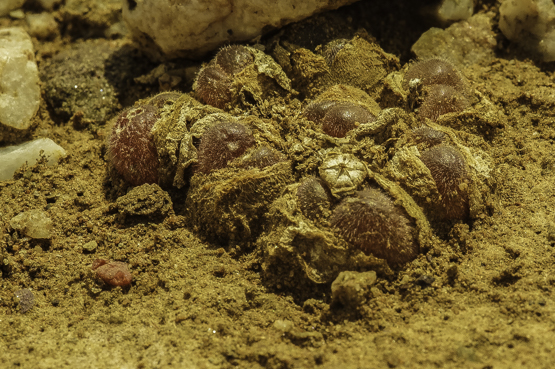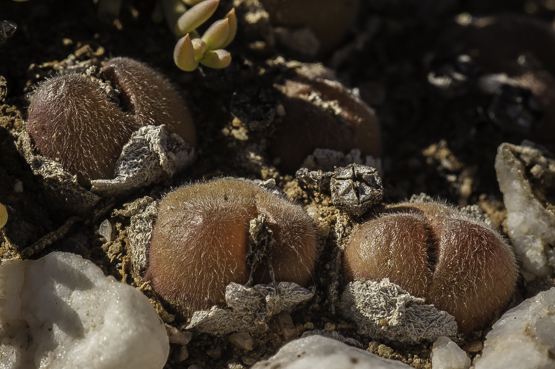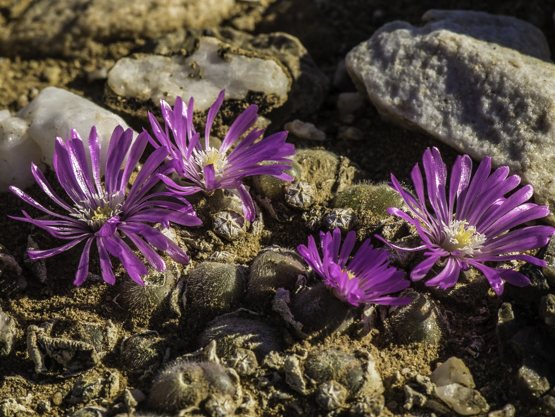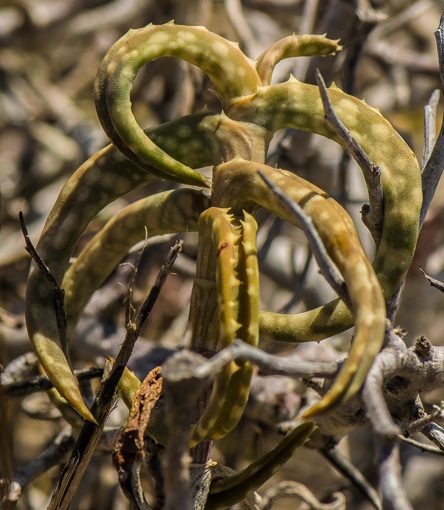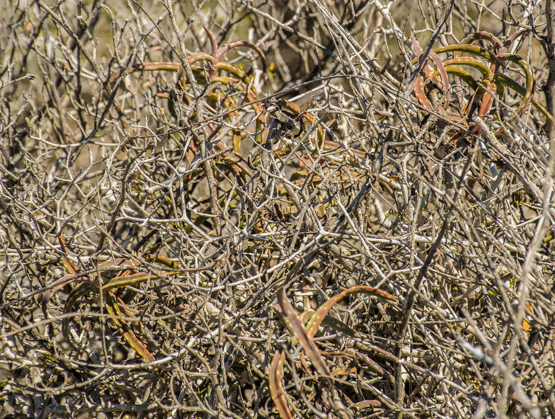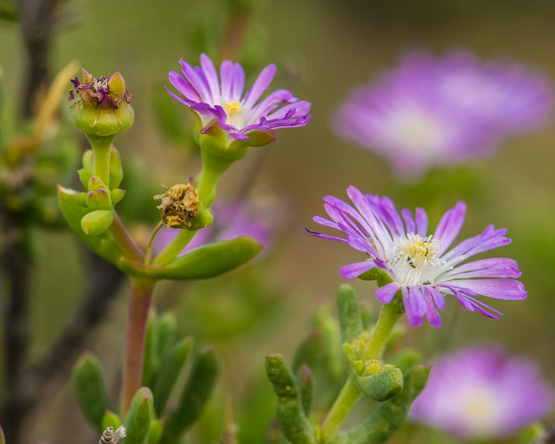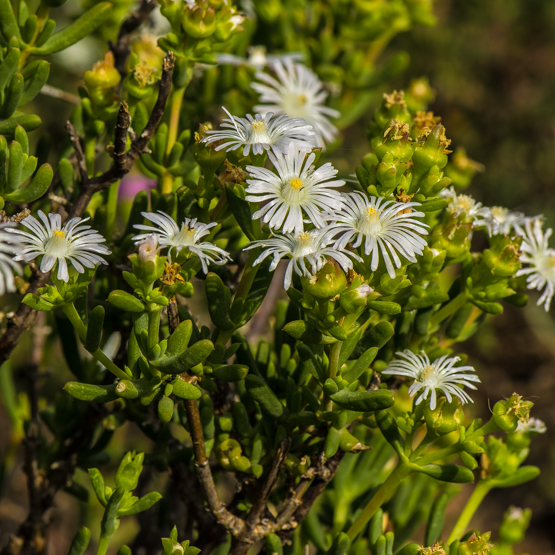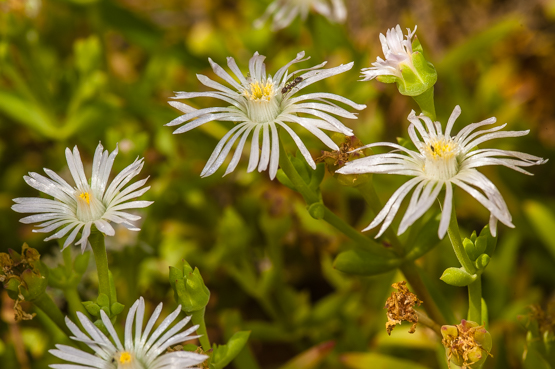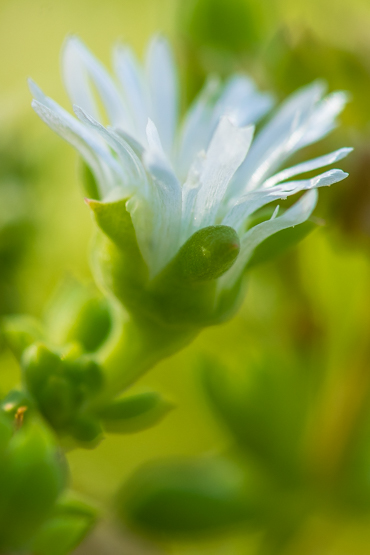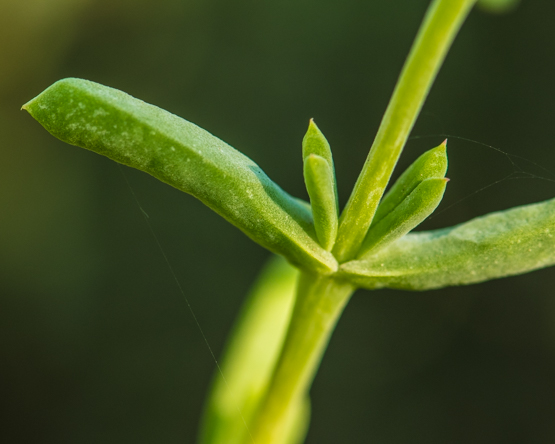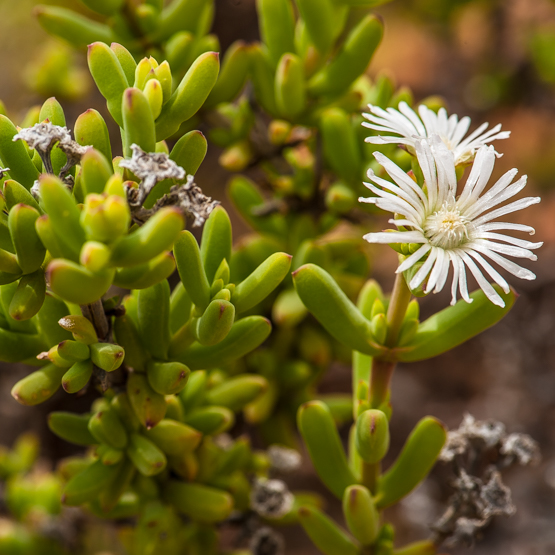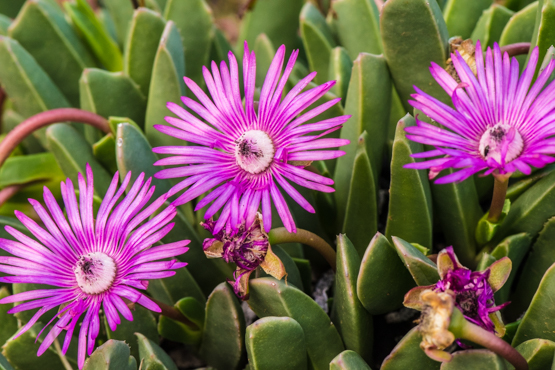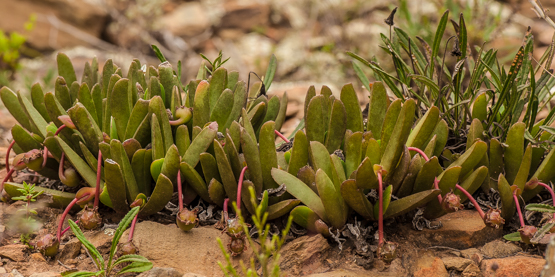Although in several species of Gibbaeums the leaves have a velvety cover, G. pilosulum is the only one with long, erect hairs. Apart from this, the species is very similar to G. nuciforme, which sometimes grows less than a kilometre away.
The plants form compact mats to 13 cm in diameter, embedded in the ground. There are up to 10 leaf pairs, which are united and form egg-shaped, green to yellowish green bodies 0.5- 2 cm across with a short fissure at the tip.
The flowers are 1.2 – 1.6 cm in diameter and bright pink to purple; they appear in July-August.
Found in the western Little Karoo (Ladismith-Barrydale area), usually in quartz patches together with G. heathii.
